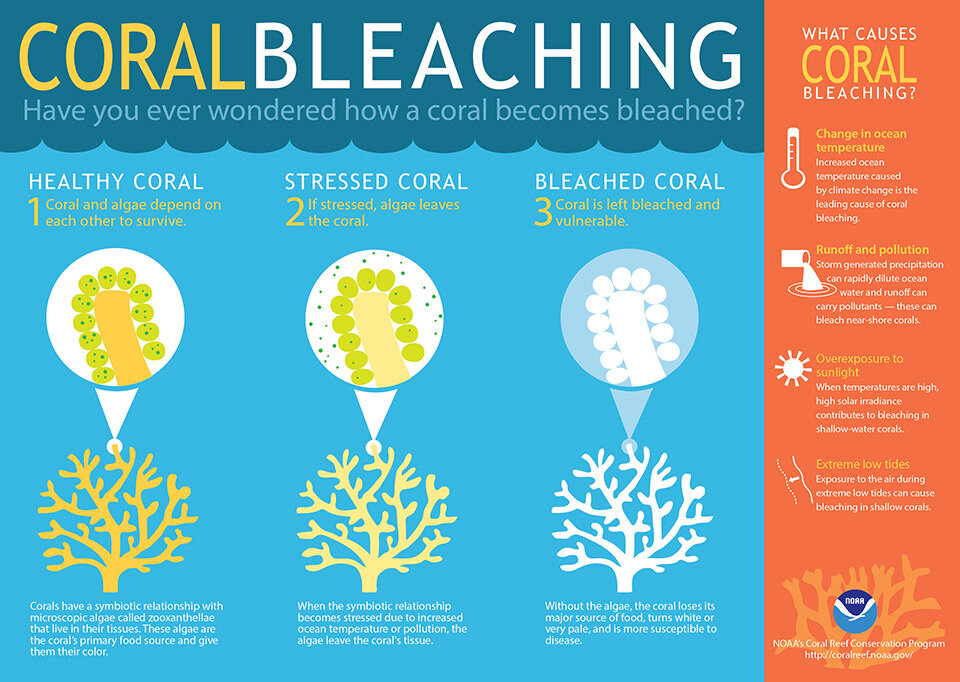Coral and their partners
SImplified Coral Anatomy: The hard skeleton of coral is formed by the secretion of calcium carbonate by the polyp. The cup-like skeleton deposited by an individual polyp is called a corallite. Polyps gather food particles with the nematocysts (stinging, venomous cells) in their tentacles, and feed from sugars produced by photosynthesizing zooxanthellae, a type of algae. The coral tissue protects these algae from herbivorous grazers, and the algae in turn use many of the polyps' waste products such as carbon dioxide, nitrogen, and phosphorus. Illustration by Laura Torresan, USGS.
science commentary 6
Coral and algae can compete with each other for space, and too much of some kinds of algae can be bad for corals and the reef. But there is another kind of algae that corals like, and that is good for them. They like it so much that they have made a partnership with it (called mutualistic symbiosis) – these algae live inside the corals! They have a very long name – called zooxanthellae or Symbiodinium. These algae are made of only one cell and are very small. Like all algae, they use the energy from the sun to make sugar through photosynthesis. But what is amazing is they then feed the corals some of this sugar they make! The corals give them a safe place to live and fertilize them too. So they need each other.
Coral Bleaching
When the corals on the reef get stressed by overfishing, too much bacteria and bad water, or water that is too warm, the Symbiodinium swim away from the corals–we don’t know exactly how this happens, but we know it can kill the corals if they are too long without their friends the Symbiodinium. Because the Symbiodinium are colored (light brown, sometimes blue or red and other colors), when they leave the corals, the coral turns white – that is why this is called coral bleaching. Corals can live without their Symbiodinium friends, but not for very long. They will begin to starve to death after a few weeks. Looking for bleaching on your reefs, and seeing how it changes over time is an important way to keep track of the reef’s health.
Learn more about coral on the National Ocean Service website


